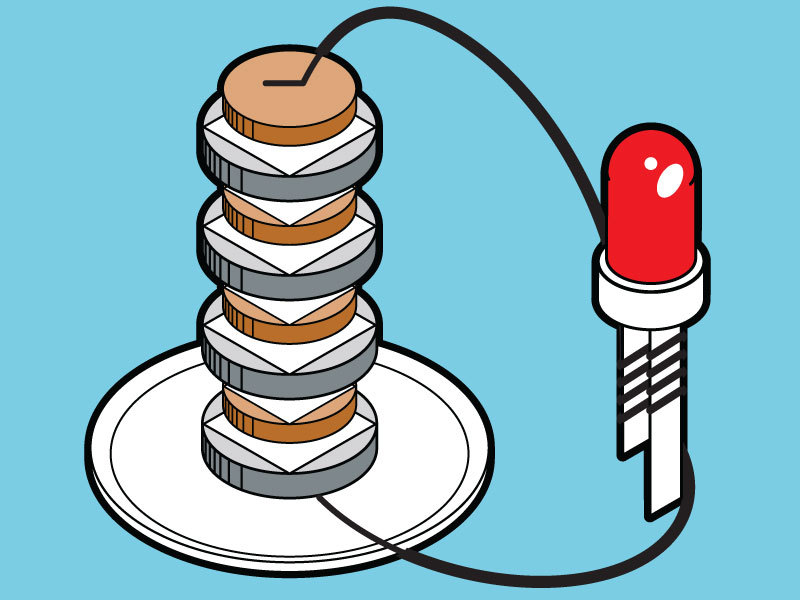No one can dispute the usefulness of electricity. But what do you do if you’re in a remote area without AC power or batteries? Make sneaky batteries, of course! And once you know how to make sneaky batteries, you’ll never again be totally out of power sources.

Tap into the power of citrus!

Insert a nail or paper clip into a lemon. Then stick a piece of heavy copper wire into the lemon. Make sure the wire is close to, but does not touch, the nail. The nail has become the battery’s negative electrode and the copper wire is the positive electrode. The lemon juice, which is acidic, acts as the electrolyte. You can use other electrode pairs besides a paper clip and copper wire, as long as they’re made of different metals.
The lemon battery will supply about ¼ to 1/3 of a volt of electricity. To use sneaky batteries to power a small electrical device, like an LED light, you must connect a few of them in a series.
Harness the power of pocket change!

With the fruit battery, you stuck the metal into the fruit’s electrolyte solution. You can also make a battery by placing a chemical solution between 2 dissimilar metal coins.
Dissolve 2 tablespoons of salt in a glass of water. This is your electrolyte solution.
Now moisten a piece of paper towel in the salt water. Put a nickel on a plate and put a small piece of the wet absorbent paper on the nickel. Place a penny on top of the paper. Next, place another moistened piece of paper towel on top of the penny, and then another nickel, and continue the series until you have a stack.
Be sure the paper separators don’t touch one another.
The more pairs of coins you add, the higher the voltage output will be. One coin pair should produce about 1/3 of a volt. With 6 pairs stacked up, you should be able to power a small flashlight bulb, LED, or other device when the regular batteries have failed. Power will last up to 2 hours.
Conclusion
This project first appeared in MAKE Volume 19, page 110.






